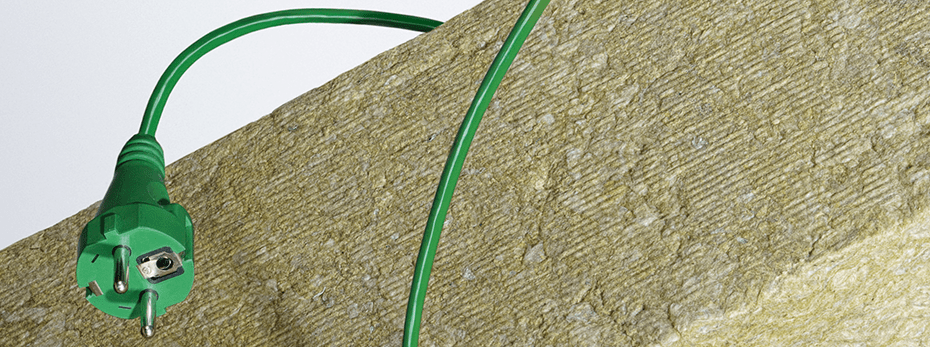
In the EU, buildings consume approximately 40% of all energy. In times of energy crisis, the question is: how could we reduce our energy consumption? The simple answer: by improving the energy efficiency of buildings with better insulation, as this can significantly reduce the energy needed for heating and cooling, free up energy for the rest of society and alleviate the energy crisis.

The EU has set a target to be climate neutral by 2050. In 2050, more than 85% of today’s buildings will still be standing – and 75% of them are not energy efficient at the moment. By insulating and thus improving the energy efficiency of these inefficiently insulated buildings, we could slash the building sector’s final energy demand by 45%.

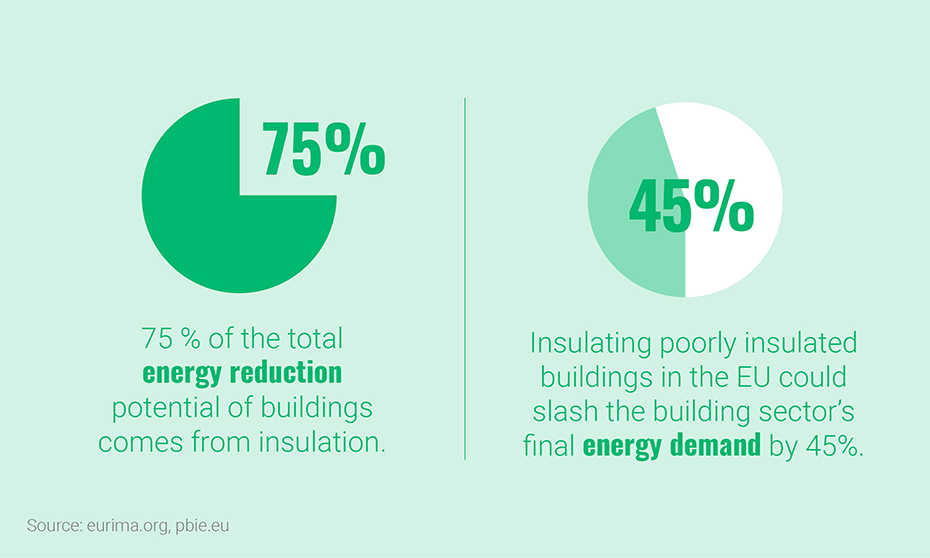
Compared to other methods – solar panels, geothermal heat – insulation is often the most cost-effective way to increase energy efficiency and reduce energy bills. In addition to reducing energy bills, improved insulation is an upgrade to living comfort since it reduces unwanted noises and keeps room temperature at the desired level. Basically, the higher the energy prices, the shorter the payback period for upgraded insulation in structures such as attics, roofs or walls. In some cases, the savings are so significant that the investment can be financed with the money that was previously spent on energy bills. For industrial insulation, the payback time for energy renovation can also be extremely short. According to an EiiF study, the payback period for improving industrial insulation is, on average, only 2 years or sometimes just a few months.

The benefits of improving the energy efficiency of buildings are not limited to lower energy bills. Less energy used for heating and cooling buildings also means less CO2 emissions. In fact, the proper insulation of inefficiently insulated buildings in the EU could reduce CO2 emissions by 204 million tons every year. This is equal to taking 43 million cars off the road for one year.

Every stone wool insulation that we produce can cut a building’s CO2 emissions for its entire lifetime. Even so, we are constantly innovating to further reduce the carbon footprint of our products. In the production of stone wool, the most energy-intensive part is melting the stones. On our electric melting production lines in Finland and Poland, we are using electric melting that runs on 100% renewable electricity. This reduces emissions from melting by 80% compared to using a cupola furnace. During 2022 we were able to reduce the CO2 emissions of our European production by 30% compared to 2018.

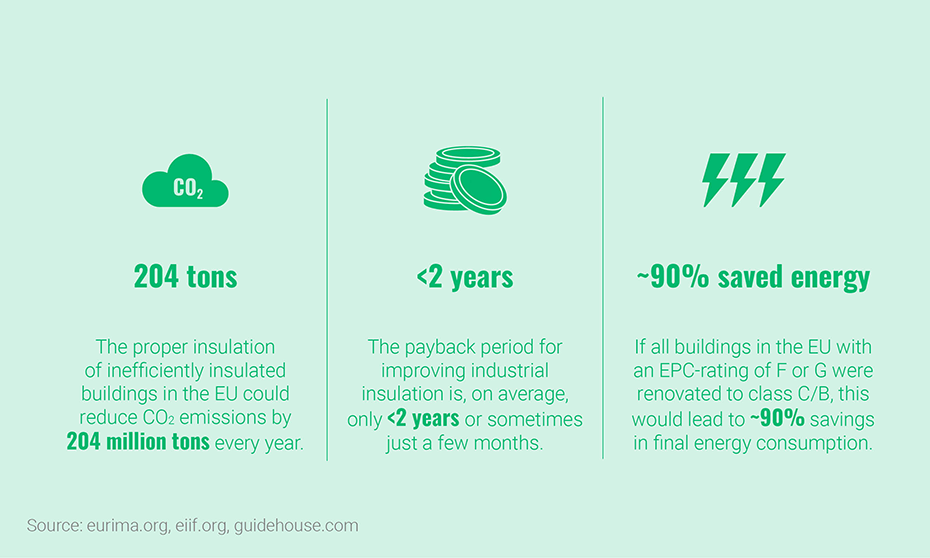
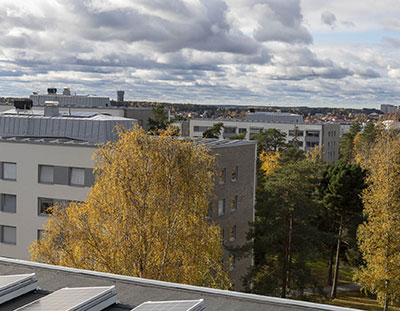
Renovation with the goal of reducing energy consumption by 60%.
Insulation not only contributes to energy efficiency but also reduces heating costs.
Fogdetorp is a large housing cooperative in Södertälje, Sweden, with 378 apartments distributed in 9 buildings that were built between 1967 and 1968. From 2018 to 2021, an extensive renovation of the properties was carried out. The buildings’ ventilation was inadequate, and the leaky windows, facades and balconies had reached their technical lifespan. The goal of the renovation was to reduce energy consumption by 60%, reduce CO2 emissions and improve the living environment.
The buildings were insulated with PAROC® stone wool, which not only contributes to energy efficiency but also reduces heating costs and improves living comfort. The facades were renovated using the SmartFront method with PAROC® Smartfront and PAROC® Fatio Plus.
Additional insulation was installed on the external walls of the buildings, which meant that no apartment space was lost and the residents' everyday life inside the apartments was minimally disturbed. New supply air ducts, connected to an FTX unit on the attic floor, were mounted in the inner insulation layer.
The renovation was nominated for the Facade of the Year 2022 (Årets Fasad) prize in Sweden. The additional insulation provides housing with reduced energy consumption, CO2 emissions and heating costs. The added insulation also dampens outside noise and makes the indoor temperature more stable, as now it is less sensitive to sudden changes in the outdoor temperature.
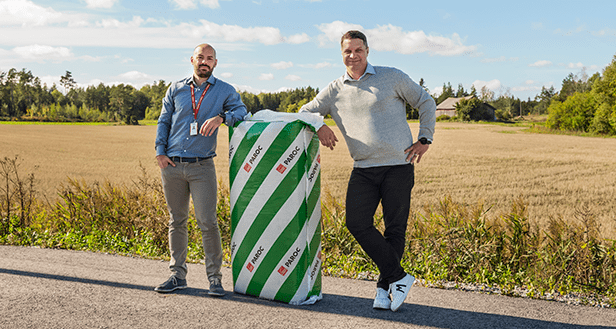
Source of information: Swedisol.se, Commission.europa.eu, BPIE.eu, Eurima,org, EiiF.org, Eurima.org, Paroc.com